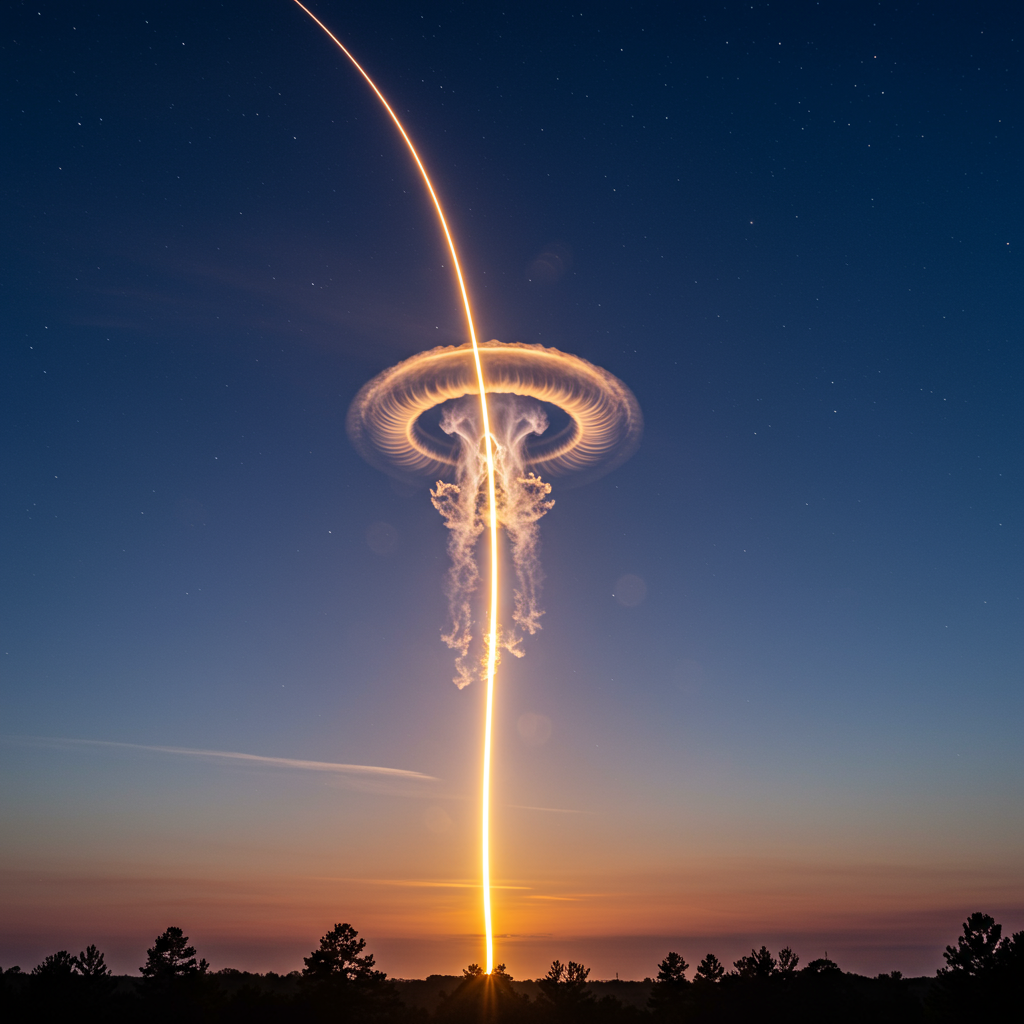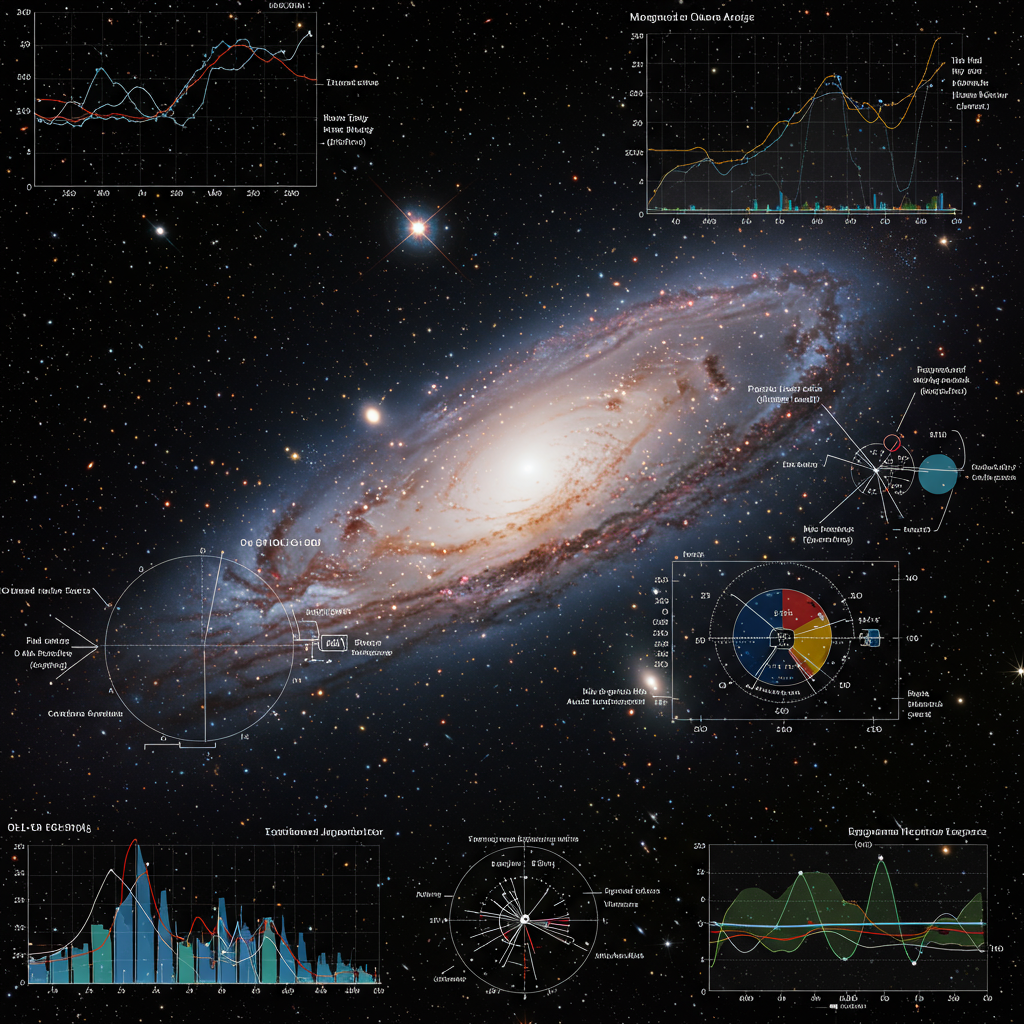Did you wake up to an ethereal, glowing spectacle painting the pre-dawn North Carolina sky? Many residents did, witnessing what’s often called a “space jellyfish” – a truly breathtaking optical illusion caused by a SpaceX rocket launch. This rare atmospheric event captivated early risers across the state, sparking widespread awe and curiosity. We delve into the science behind this incredible display, explore the mission that created it, and guide you on how to potentially witness such a phenomenon yourself.
The Unforgettable Spectacle Over North Carolina
Early on Thursday, September 18, 2025, the serene North Carolina sky became the stage for an extraordinary visual. Residents from Clayton to Raleigh, Knightdale to Garner, and throughout Fuquay-Varina, Smithfield, and Willow Spring, reported seeing a bright, expanding ball of light. This striking visual was no ordinary celestial body. It was, in fact, the exhaust plume of a SpaceX Falcon 9 rocket.
The WRAL News inbox flooded with countless photos and videos. Viewers shared their amazement at the sight, visible shortly after 5:30 a.m. Many reported catching the view during their routine morning walks. The widespread visibility and unique appearance ignited conversations about this transient yet unforgettable astronomical event.
Decoding the “Space Jellyfish” Phenomenon
The dramatic effect seen across North Carolina has earned itself an evocative nickname: the “space jellyfish.” While it looks otherworldly, its origins are firmly rooted in atmospheric science and orbital mechanics. Understanding this phenomenon helps demystify the stunning visual.
The Science Behind the Sky Show
WRAL meteorologist Grant Skinner provided expert insight into this captivating display. He explained that the “space jellyfish” effect arises from specific atmospheric conditions. As the SpaceX Falcon 9 rocket ascended, it released gases high into our planet’s upper atmosphere. These gases then interacted with sunlight in a precise way.
Even though the ground below was still steeped in pre-sunrise darkness, the rocket’s high altitude allowed it to catch the sun’s rays. This sunlight reflected off the expanding plume of exhaust gases. The result was a luminous, often translucent, cloud-like formation that expanded and shifted. Its ethereal appearance, with a bright core and trailing, translucent tendrils, led to its whimsical “jellyfish” moniker.
Why Timing is Everything for a Celestial Glow
The timing of the launch was absolutely critical for this visual marvel. The “space jellyfish” phenomenon is an optical illusion that occurs exclusively during twilight. This means launches must happen either just before sunrise or just after sunset. During these brief windows, the sun is positioned just below the horizon from the observer’s perspective on the ground.
However, at extreme altitudes, where the rocket travels, the sun is already visible. This perfect alignment allows the sun’s light to illuminate the rocket’s exhaust plume from above, while the observer remains in relative darkness. It contrasts starkly with daytime launches, where the exhaust is often obscured by the bright sky, or nighttime launches, where there’s no sunlight to reflect. Without this specific interplay of light and shadow, the captivating “space jellyfish” would remain unseen.
SpaceX’s Starlink Mission: Connecting the Globe
The remarkable sky show was a byproduct of a much larger mission. The SpaceX Falcon 9 rocket was on a crucial journey to deploy more Starlink satellites. These missions represent a significant leap in global connectivity.
A Network in the Stars: Starlink’s Ambitious Goal
The Falcon 9 launch successfully carried 28 Starlink satellites into low-Earth orbit (LEO). Starlink is SpaceX’s ambitious satellite internet constellation. Its overarching goal is to provide high-speed, low-latency internet access to nearly every corner of the world. This includes rural and remote areas where traditional internet infrastructure is often limited or non-existent.
By deploying thousands of small satellites, Starlink aims to create a vast, interconnected network. This network promises to bridge the digital divide for millions, offering reliable internet service where it was once impossible. The ongoing deployment of these satellites is a testament to SpaceX’s commitment to pushing the boundaries of both space exploration and global communication.
The Falcon 9: A Reusable Marvel of Engineering
A key aspect of this particular mission highlights SpaceX’s innovative approach to spaceflight. The booster used for the first stage of this Falcon 9 flight marked its seventh journey into space. This remarkable reusability is a cornerstone of SpaceX’s strategy. It drastically reduces the cost of space launches, making access to orbit more frequent and economical.
Approximately eight minutes after its powerful liftoff from Cape Canaveral Space Force Station in Florida, the reusable booster detached. It then executed a flawless, precision landing on an autonomous drone ship stationed in the vast Atlantic Ocean. This successful recovery underscores the advanced engineering and operational efficiency that SpaceX has pioneered in the aerospace industry.
How to Spot Your Own Sky Phenomenon
Witnessing a “space jellyfish” or any rocket launch can be an inspiring experience. If you’re an early riser or stay up late, you have several opportunities to observe these celestial events. Knowing when and where to look significantly increases your chances.
Tips for Aspiring Skywatchers
Seeing a rocket launch, especially one that produces the “space jellyfish” effect, requires a bit of planning:
Check the Schedule: SpaceX and other launch providers regularly update their launch schedules online. Pay close attention to launch windows and potential delays.
Time it Right: For the “space jellyfish” effect, focus on launches scheduled just before sunrise or just after sunset (twilight hours).
Find Your Horizon: Position yourself with a clear, unobstructed view of the eastern horizon for Florida launches. Light pollution should be minimal for best visibility.
Weather Matters: Clear skies are essential. Clouds can easily obscure the view.
Be Patient: Launches can be delayed, so check updates frequently. Arrive early to get settled.
Upcoming Opportunities to Witness a Launch
For those in North Carolina, several more opportunities were slated in the coming weeks following this particular September 18, 2025, launch. These provide chances to see a similar phenomenon, especially those occurring in the pre-dawn hours. According to the SpaceX launch schedule, additional Falcon 9 missions carrying Starlink satellites were planned from Florida:
September 21, 2025, at 5:20 a.m. EST: From Cape Canaveral.
September 23, 2025, at 11:32 a.m. EST: From Kennedy Space Center.
September 25, 2025, at 4:36 a.m. EST: Again from Cape Canaveral.
Early risers are particularly encouraged to mark their calendars for these pre-dawn launches. They offer the best chance to see the elusive “space jellyfish” effect. If you capture any stunning photos or videos, many news outlets encourage submitting them to share with the wider community.
Beyond the Light Show: The Impact of Space Exploration
The fleeting beauty of a “space jellyfish” is more than just an atmospheric anomaly; it’s a visual reminder of humanity’s ambitious reach into space. Each launch represents countless hours of scientific research, engineering brilliance, and a collective human desire to explore, innovate, and connect. From developing reusable rockets to establishing global internet networks, private companies like SpaceX are dramatically reshaping our relationship with the cosmos. These missions not only deliver satellites into orbit but also inspire the next generation of scientists and engineers, fostering a deeper appreciation for the wonders both above and within our atmosphere.
Frequently Asked Questions
What exactly is a “space jellyfish” and why does it appear?
A “space jellyfish” is an optical phenomenon observed during certain rocket launches, characterized by a bright, expanding, and often translucent cloud-like formation. It occurs when a rocket’s exhaust plume, released at very high altitudes, catches and reflects sunlight. This happens primarily during twilight hours—just before sunrise or just after sunset—when the ground observer is still in darkness, but the high-altitude plume is illuminated by the sun’s rays, creating the glowing, ethereal appearance.
How can I find out about upcoming SpaceX launches visible from my area?
To find out about upcoming SpaceX launches, regularly check the official SpaceX website for their launch schedule, which provides dates, times, and launch locations. Additionally, follow reliable space news websites, local news channels (especially those in areas near launch sites like Florida’s Space Coast), and dedicated skywatching forums. Pay attention to launch times, as pre-dawn or post-dusk launches from Cape Canaveral or Kennedy Space Center are most likely to produce visible effects like the “space jellyfish” across states like North Carolina.
Are Starlink satellites helping to improve internet access globally?
Yes, Starlink satellites are significantly contributing to improving internet access around the world, particularly in underserved and remote regions. SpaceX’s Starlink constellation aims to provide high-speed, low-latency broadband internet by deploying thousands of satellites into low-Earth orbit. This global network offers an alternative to traditional terrestrial internet infrastructure, which can be costly or impossible to implement in certain geographical areas, thereby helping to bridge the digital divide and connect more people worldwide.
Conclusion
The “space jellyfish” phenomenon witnessed over North Carolina was a breathtaking blend of science and spectacle. It showcased the marvels of space exploration and atmospheric optics. From the innovative engineering of SpaceX’s reusable Falcon 9 rocket to the ambitious goal of Starlink satellites, these events continually push the boundaries of what’s possible. Keep an eye on the skies and the launch schedules. You might just be fortunate enough to witness your own unforgettable celestial display, a glowing reminder of humanity’s ongoing journey among the stars.



